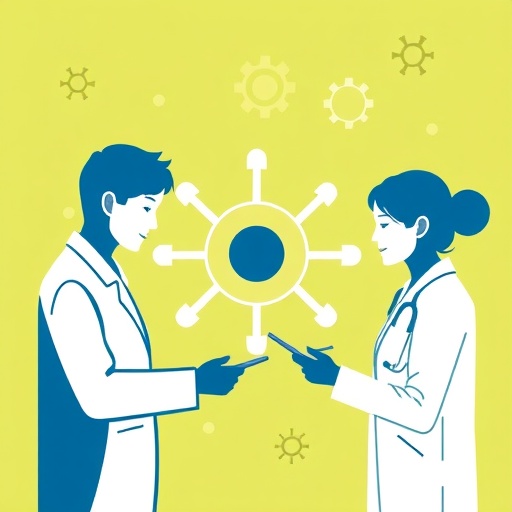In a groundbreaking study, researchers at the intersection of engineering and healthcare are exploring the synergistic potential of interdisciplinary collaboration between bioengineering and nursing students. This innovative partnership aims to reshape the landscape of medical product design, enhancing both educational outcomes and product efficacy. By fostering a collaborative environment where technical skills meet clinical insights, the study delves deep into the implications of such interdisciplinary integration in the development of medical technologies.
The researchers initiated their investigation by assessing the existing paradigms of medical product design and the distinct roles that nursing and engineering students traditionally occupy within these frameworks. They identified a critical gap in communication and cooperation between the two disciplines, often leading to products that do not fully address the real-world challenges faced by healthcare professionals and patients alike. By bridging this gap, they aimed to enhance the design process, ensuring that medical products are user-centered and clinically relevant.
At the core of this study was a structured program that paired bioengineering students with nursing students in a series of collaborative projects. This integrative approach was implemented to facilitate mutual learning experiences that emphasize practical application alongside theoretical knowledge. The researchers deployed a variety of methodologies, including workshops, joint design sessions, and feedback loops, to enhance the interaction between the two student groups. They aimed for a dynamic exchange of ideas that would elevate the quality of the developed products.
Throughout the duration of the study, the partnership resulted in the creation of several prototypes aimed at addressing specific healthcare challenges. These projects ranged from wearable health monitoring devices to innovative wound care technologies. Each prototype underwent rigorous evaluation not only in terms of technical feasibility but also through the lens of clinical utility. Nursing students contributed unique insights from their clinical experiences, helping to validate the relevance and applicability of each design concept.
Feedback from both student participants and faculty advisors highlighted several key benefits of the interdisciplinary collaboration. Students expressed an increased appreciation for each other’s skill sets and perspectives, which facilitated a deeper understanding of the complexities involved in medical product design. This newfound respect led to enhanced teamwork and a more holistic approach to problem-solving. Moreover, faculty noted an improvement in the students’ ability to articulate their ideas and defend their designs in front of a diverse audience, a critical skill for future professionals.
The researchers also examined the impact of this partnership on the students’ educational experiences. Surveys and interviews revealed that participating in the program significantly boosted students’ confidence and sharpened their critical thinking skills. They learned to approach problems from multiple angles and appreciated the importance of collaboration in driving innovation. These findings underscore the need for educational institutions to cultivate interdisciplinary programs that prepare students for the complexities of modern healthcare environments.
Furthermore, the study opened discussions on the future of medical product design education. By documenting the experiences and outcomes, the researchers aim to provide a framework for replicating this model at other institutions. They advocate for a curricular shift that incorporates more interdisciplinary projects, fostering environments where students from different fields can work together to solve pressing healthcare challenges.
As the research continues to unfold, the team is eager to track the long-term implications of such partnerships. One of their primary objectives is to translate the successes of this program into broader initiatives that can engage a wider array of disciplines, including computer science and design. By expanding the scope of collaboration, they hope to harness various expertise and stimulate innovation in the medical product design space.
In realizing the potential of interdisciplinary partnerships, the researchers are also keenly aware of the challenges that may arise. They intend to explore how institutional barriers, curriculum constraints, and differing academic cultures can impact the effectiveness of collaborative programs. By addressing these challenges, the team hopes to create more sustainable models for interdisciplinary education in the future.
The implications of their research extend beyond academic settings, suggesting potential benefits for the healthcare industry at large. By developing medical products that are co-designed by individuals with both clinical and technical backgrounds, the final products are more likely to meet the needs of healthcare providers and patients. This alignment of perspectives can lead to smoother implementation in real-world settings, ultimately enhancing patient care and outcomes.
As the study progresses, the researchers anticipate sharing their findings through conferences and publications, making their insights accessible to a global audience. They aim to inspire other institutions and educators to rethink how healthcare and engineering education are approached, advocating for curricula that emphasize collaboration, creativity, and compassion.
Ultimately, this pioneering research serves as a testament to the power of interdisciplinary partnerships in shaping the future of medical product design. By promoting interactions between bioengineering and nursing students, the study not only fosters educational growth but also paves the way for innovations that can significantly impact patient care. As healthcare technologies continue to evolve, the strength of collaboration will undoubtedly play a crucial role in driving advancements that improve lives.
Subject of Research: Interdisciplinary Collaboration in Medical Product Design
Article Title: Assessment of a Bioengineering and Nursing Student Partnership for Medical Product Design
Article References:
Clark, R.M., Dukes, A.A., Sowko, L. et al. Assessment of a Bioengineering and Nursing Student Partnership for Medical Product Design.
Biomed Eng Education (2025). https://doi.org/10.1007/s43683-025-00180-y
Image Credits: AI Generated
DOI:
Keywords: Interdisciplinary Education, Bioengineering, Nursing, Medical Product Design, Healthcare Innovation, Student Collaboration




